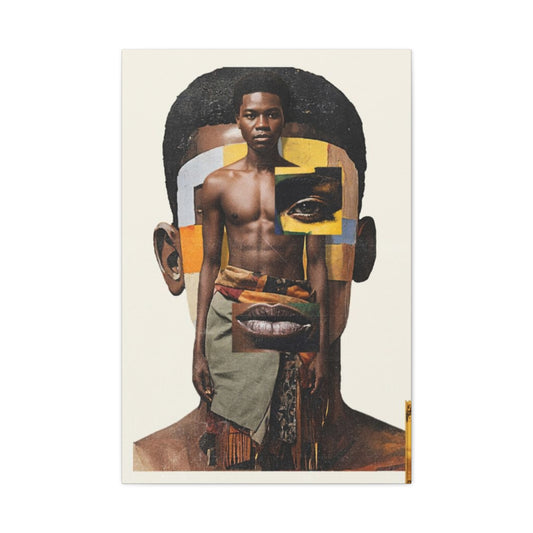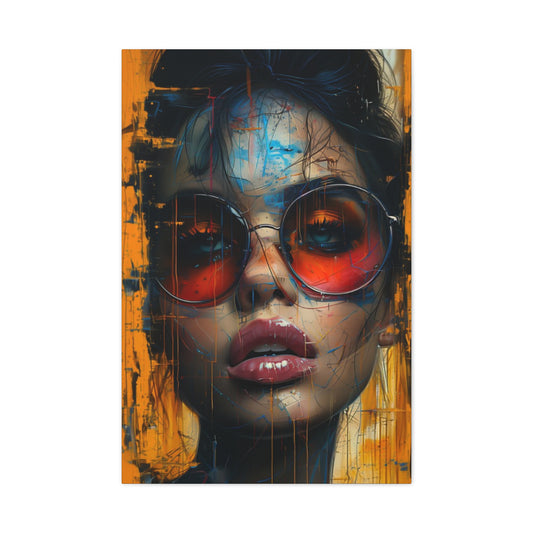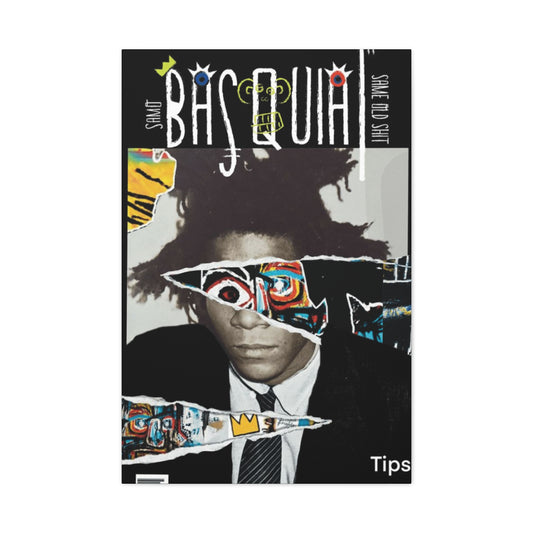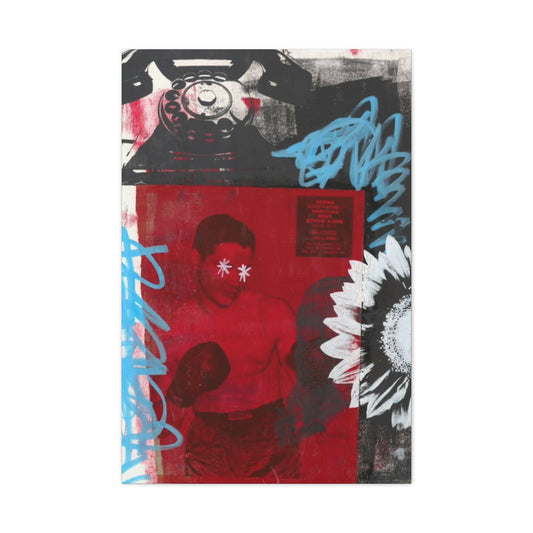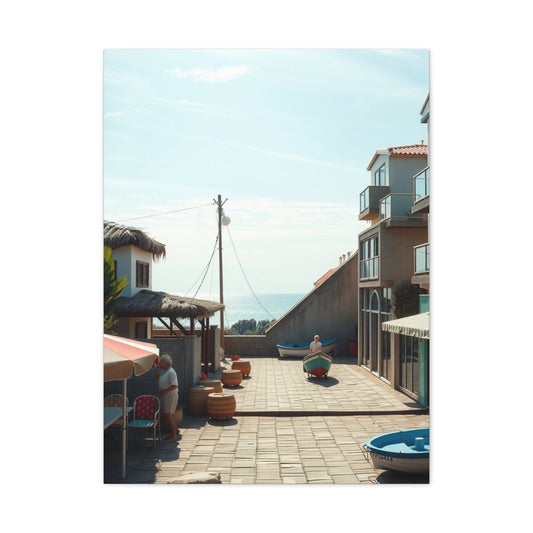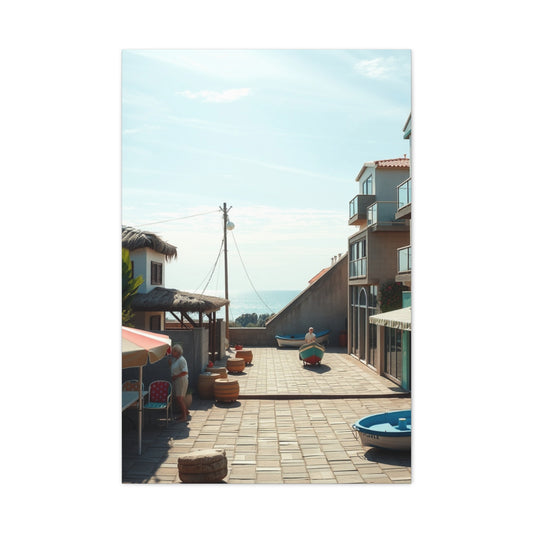The Art of Light in Watercolour: Herman's Unique Approach
Watercolour painting is often regarded as a delicate medium that requires patience, careful technique, and an innate understanding of how light interacts with the forms it touches. For Australian painter Herman, however, watercolour transcends the traditional approach; it becomes a profound exploration of light itself. Known for his exceptional ability to capture the fleeting and dynamic nature of natural light, Herman transforms everyday scenes into something extraordinary. Whether he is painting a bustling street in his home city of Melbourne or a peaceful countryside view in Faversham, Kent, his philosophy is consistent: to encourage artists to fully engage with their surroundings, to exaggerate the contrasts of light and shadow, and to create compositions that are both dramatic and alive.
At the core of Herman's artistic journey is his dedication to painting outdoors, en plein air, allowing him to witness firsthand how natural light continuously shifts and evolves throughout the day. Painting in such conditions demands quick thinking and adaptability, as the light changes before the artist's eyes. For Herman, this dynamic environment provides the perfect opportunity to translate the transient beauty of the world into a permanent form. His outdoor paintings are not mere reproductions of what he sees but interpretations of the way light transforms the landscape, creating layers of vibrancy and depth. This immersive experience of painting outdoors also reflects Herman’s belief that an artist should feel a deep connection with the environment, allowing the scene to guide the painting process.
To truly paint like Herman, it is essential to approach each scene with an open mind and a keen eye for detail. An artist must constantly search for the interplay between light and dark, identifying how the changing light illuminates certain aspects of the scene and casts shadows on others. By emphasizing these contrasts, Herman believes that the artist can give the painting an energy and movement that mimics the natural world. The goal is not to simply replicate what the eye perceives, but to interpret it in a way that brings out its most striking elements. This often means exaggerating the light effects, enhancing them to create drama and depth, which, in turn, gives the painting a sense of vitality and immediacy. The result is a work of art that feels as though it has captured a fleeting moment in time, preserved in the delicate brushstrokes of watercolour.
The Significance of the Focal Point in Watercolour Composition
One of the most intriguing elements of Herman’s approach to watercolour is his insistence on finding a focal point in every scene. The focal point is the visual anchor of the painting, whether it's a prominent object, such as a tree or street lamp, or a more subtle detail, like a play of light on a building’s surface. This central feature becomes the driving force behind the composition, guiding the artist in making decisions about how to treat the rest of the scene. By identifying this focal point, Herman encourages artists to focus their energy on it, using it as a reference to exaggerate the contrasts of light and shadow.
Once the focal point is established, the artist can begin to manipulate the light to emphasize its effect on the scene. Herman's method is not about mimicking reality but rather interpreting it through the lens of artistic expression. The light and shadow play a crucial role in this interpretation, with exaggerated light effects creating a sense of depth and movement within the composition. This allows the artist to take a seemingly ordinary moment and turn it into something extraordinary, imbuing the scene with a dramatic sense of atmosphere and energy that might otherwise be overlooked.
Through the use of light, Herman also opens the door for artists to experiment with their compositions, making subtle changes that improve the visual balance and harmony of the painting. While this approach may seem unorthodox, he sees these alterations as an essential part of the artistic process. For example, if an element of the scene seems out of place or doesn't quite fit within the overall structure, Herman believes that it is acceptable to adjust the composition to achieve a more visually appealing outcome. This could involve shifting the position of a tree or moving the placement of a building slightly to create a more balanced, cohesive image. These modifications are not seen as falsifications of the scene but rather as an opportunity to enhance the visual impact of the painting, making the final work more compelling and dynamic.
Watercolour as a Tool for Experimentation and Expression
Herman's watercolour paintings are not merely depictions of the world around him but rather an exploration of light, texture, and composition. The countryside scenes he captures during his travels to the UK, particularly in Faversham, Kent, are prime examples of his ability to push the boundaries of the medium. The rural landscapes, rolling hills, and riversides of Kent provide an ideal setting for Herman to experiment with different techniques, layering washes of colour to create a rich, textured surface that evokes a sense of timelessness. By bending the relationship between light and shadow, Herman infuses these scenes with an almost ethereal quality, allowing the viewer to feel a deep connection with the natural world.
These rural settings offer a unique opportunity for Herman to explore the nuances of light, especially the way it interacts with the ever-changing landscape. Whether it’s the soft glow of a sunset over the countryside or the stark contrasts of midday light filtering through trees, each moment offers its own set of challenges and rewards. The shifting quality of light is something that Herman continually seeks to capture in his paintings, finding beauty in the subtle and sometimes fleeting effects that are present only for a brief moment in time.
For Herman, the countryside serves not just as a backdrop but as an active participant in his creative process. Each element of the scene, the placement of trees, the direction of the light, and the textures of the landscape, provides clues and inspiration for the composition. As he works, Herman encourages a fluid, almost instinctive approach to painting, allowing the scene to evolve organically as the light shifts and changes. It is this responsiveness to the environment that allows him to capture the true essence of a place, translating it into a work of art that feels fresh and alive. The result is a painting that does not simply replicate the world but transforms it, allowing the viewer to experience it in a completely new way.
Herman’s use of watercolour in capturing the shifting moods of the countryside speaks to his deep understanding of the medium’s potential. Watercolour, with its delicate washes and transparent layers, allows him to create a sense of depth and luminosity that is difficult to achieve with other materials. The subtle interplay of light and colour, the fluid transitions between shades, and the natural texture that emerges as the paint dries all contribute to the unique character of his work. Through this process, Herman continues to push the limits of what is possible with watercolour, constantly discovering new ways to express his vision of the world.
Ultimately, Herman’s watercolour paintings offer more than just visual representations of the world; they offer a deeper understanding of the way light, form, and composition interact. By exaggerating the contrasts between light and dark, altering compositions to enhance visual balance, and experimenting with the fluid nature of watercolour, Herman creates works of art that invite viewers to engage with them on a deeper level. His philosophy encourages artists to step outside the boundaries of traditional representation, embracing the challenges and rewards of capturing light in all its complexity. Whether painting the streets of Melbourne or the countryside of Kent, Herman’s work is a testament to the power of watercolour as a medium of expression, capturing the fleeting beauty of the world with grace and insight.
Robert Wade's Approach to Watercolour Mastery
Renowned Australian artist Robert Wade has built a legacy on his innovative and experimental approach to watercolour. Unlike Herman, who tends to embrace the natural landscape, Robert prefers the controlled environment of his studio in Melbourne. His highly regarded DVD series, "Wade’s Watercolour Wisdom," offers a comprehensive and immersive exploration of watercolour techniques, providing a valuable insight into the creative potential of the medium. Robert’s teaching method focuses on more than just completing paintings; his ultimate goal is to empower the artist with a deep understanding of watercolour’s unique capabilities and how to use it to convey a diverse array of moods and emotions.
Robert’s approach to watercolour is grounded in the philosophy of exploration and discovery. He encourages the artist to go beyond technical perfection and instead focuses on engaging with the medium in a fluid, natural way. Each lesson begins with a series of practical exercises designed to build confidence and foster a deeper understanding of watercolour’s character. These exercises are not intended to produce finished works, but to familiarize the artist with watercolour’s expressive potential, ultimately allowing them to approach the medium with more intuition and freedom. For Robert, the journey of learning is just as valuable as the result.
A key component of Robert's method is the wet-into-wet technique, a foundational approach in which water is applied to the paper before any pigment is introduced. This technique encourages the free-flowing and unpredictable nature of watercolour, resulting in soft edges, subtle transitions, and dynamic colour shifts. The wet-into-wet method challenges the artist to embrace uncertainty and let the water and pigment move freely, fostering a deeper connection between the artist and the medium. As the lessons progress, Robert introduces more controlled methods, such as dry brushing, which allows the artist to gain greater precision in their work. Dry brushing helps create sharper lines and textures, providing an avenue for fine detail that contrasts with the soft, unpredictable nature of wet-into-wet. The combination of these two contrasting techniques gives the artist the tools to master both spontaneous and controlled aspects of the medium, opening the door to a broader creative vocabulary.
Building Confidence through Techniques and Exploration
Robert Wade’s focus on building confidence is a hallmark of his teaching style. Throughout his DVD series, he encourages students to explore a wide range of techniques to develop their artistic voice. His exercises do not push for finished, polished works but instead are designed to help the artist explore the full spectrum of watercolour’s potential. This approach is particularly beneficial for beginners or those who feel restricted by traditional methods. Robert’s emphasis on experimentation allows artists to step outside of their comfort zones and embrace the unexpected nature of watercolour.
By introducing a variety of techniques early on, Robert helps the artist gain a deeper understanding of the diverse ways watercolour can be used. He encourages his students to approach their work with curiosity, experimenting with different textures, tones, and compositions. One of the most exciting aspects of Robert’s teachings is his ability to transform abstract shapes and random colours into something tangible. His students quickly learn to see past the chaos of uncontrolled pigment and discover underlying forms that are waiting to be expressed. This ability to find order within the abstraction is an essential skill for mastering the medium, as it teaches artists to interpret and give meaning to the flow of water and paint.
This focus on creative exploration also extends to the idea of personal expression. Robert believes that watercolour is uniquely suited to conveying a wide range of emotions, moods, and effects. Unlike more rigid mediums, watercolour allows the artist to express themselves in a fluid, organic way. Robert encourages artists to embrace the process, not just the outcome. He teaches that making mistakes is part of the journey, and that these so-called "failures" often lead to unexpected discoveries. By fostering a mindset of risk-taking and openness, Robert helps students cultivate a sense of freedom in their creative practice.
Throughout his lessons, Robert underscores the importance of allowing watercolour to be an adventure, rather than a predictable process. The medium's unpredictable nature is something that artists must learn to accept and even cherish. For Robert, it is not about controlling every aspect of the painting but rather about navigating the dance between intention and spontaneity. This philosophy nurtures a deep trust in the medium and the artist's instincts. As students progress through the DVD series, they begin to develop a more intimate relationship with watercolour, gaining confidence in their ability to work with its fluidity and embrace the uncertain outcomes it often produces.
Embracing the Fluidity of Watercolour for Personal Expression
Perhaps one of the most powerful lessons Robert Wade imparts is the idea of using watercolour as a tool for personal expression. Unlike other art forms that may rely on rigid techniques or precise representations, watercolour offers an open space for emotional and sensory exploration. Robert’s teachings emphasize that watercolour is about the journey, not just the destination. He encourages artists to let go of expectations and to embrace the unpredictable flow of colour as a way of expressing their inner thoughts, moods, and feelings.
Robert’s teachings emphasize the value of embracing watercolour’s inherent unpredictability. One of the most alluring aspects of watercolour is its fluidity. As pigments blend and spread across the wet surface, they create unexpected patterns and textures that cannot always be anticipated. This serendipity is what makes the medium so captivating, and Robert encourages artists to not only accept but also celebrate this aspect of watercolour. He believes that true mastery comes from learning to trust the process and allowing the medium to reveal its surprises.
The unpredictability of watercolour can also be a source of frustration for many artists, especially those accustomed to more controlled mediums. Robert addresses this challenge by fostering an environment in which making mistakes is part of the learning process. He teaches that mistakes are not failures but opportunities to explore new techniques, adjust direction, and discover new creative pathways. By removing the pressure of perfection, Robert creates an atmosphere of play and curiosity, which is crucial for anyone looking to expand their artistic abilities.
Through Robert’s guidance, students learn to embrace the fluid nature of watercolour, using it as a means to explore not just the world around them, but also their emotional landscape. Watercolour’s ability to evoke a wide range of moods from serene and calm to bold and dramatic makes it an ideal medium for artists seeking to express their inner experiences. Whether capturing the quiet beauty of a landscape or the dynamic energy of an abstract composition, watercolour allows for a level of emotional depth and fluidity that is often challenging to achieve in other media.
By the end of his DVD series, students are equipped not only with a diverse set of technical skills but also with a deeper understanding of the creative possibilities that watercolour offers. Robert’s approach is about building a personal relationship with the medium, one that nurtures artistic exploration, encourages risk-taking, and, above all, fosters a sense of joy in the painting process. His teachings are a reminder that watercolour is as much about the journey of self-discovery as it is about creating a finished piece of art. For Robert Wade, the true beauty of watercolour lies not in the final product but in the endless possibilities it offers for creative exploration and personal expression.
Exploring Different Approaches to Watercolour Painting
Watercolour painting, often admired for its fluidity and vibrancy, is a medium that offers endless possibilities for artistic exploration. Two accomplished artists, Herman and Robert, although both deeply passionate about watercolour, have distinct teaching methods and creative processes. Herman's approach to painting is deeply inspired by nature, with a focus on capturing the essence of the natural world. He prefers working outdoors, where he can observe and interpret the nuances of light, shadow, and atmosphere in real time. His painting sessions are often spontaneous, driven by the natural environment, where the unpredictable weather conditions and shifting light present unique challenges and opportunities for creativity.
In contrast, Robert's methodology is grounded in a more controlled, studio-based environment. His emphasis is on technical mastery and a thorough understanding of the medium. He believes that to truly master watercolour, one must first understand its technical aspects, how to manipulate the pigment, control the flow of water, and layer colours effectively. Working in a studio setting gives him the freedom to experiment and focus entirely on technique, refining every brushstroke with precision. While Herman thrives in the unpredictable, ever-changing outdoor conditions, Robert's controlled studio environment allows for a deep dive into the technical intricacies of watercolour, making it easier to focus on developing consistent and flawless execution of each painting.
Despite their contrasting settings and approaches, both artists share a unified belief: watercolour is a versatile medium that not only enables artists to explore their creativity but also serves as a powerful vehicle for self-expression. Both acknowledge that to truly master watercolour, an artist must balance their technical abilities with a deep personal connection to the subject matter. Whether in the studio or outdoors, the ultimate goal for both Herman and Robert is to encourage students to embrace experimentation, take risks, and discover their unique artistic voice.
The Importance of Observation and Patience in Watercolour
When it comes to painting, whether inside a studio or outdoors, the essence of patience and observation is fundamental to the process. Both Robert and Herman emphasize the importance of these qualities, yet they manifest in different ways depending on the environment in which the artist is working. For Robert, the studio setting provides a controlled space where he can delve deeply into the technical aspects of watercolour painting. The ability to control light, shadow, and other external factors allows him to refine his technique, focusing on precision and mastery. In this setting, artists can devote time to understanding how water interacts with pigment, how to layer colours to achieve depth, and how to use tools such as brushes and sponges to create intricate textures.
Robert's method teaches that mastery comes through repetition and careful study. In the studio, the artist has the luxury of time to experiment without the pressure of changing light or unpredictable weather. This deliberate approach fosters discipline, encouraging the artist to build a solid technical foundation, which is crucial for anyone aiming to achieve a high level of skill in watercolour painting. By honing these technical abilities, the artist learns how to manipulate the medium with confidence and control, ultimately enhancing their ability to translate their creative vision onto paper.
In contrast, painting outdoors, as Herman prefers, demands a different kind of focus and discipline. The natural world offers a dynamic and ever-changing environment, forcing the artist to adapt quickly to shifting light, changing weather, and fleeting moments of beauty. The outdoor setting requires a keen sense of observation, as the artist must capture the essence of a scene within a limited amount of time before the light changes or the weather shifts. This calls for quick decision-making, often without the luxury of revisiting or refining a composition.
Herman’s method teaches artists to embrace spontaneity and the unpredictable nature of outdoor painting. In this setting, patience is still essential, but it takes on a different form. Rather than focusing on minute details or controlled brushstrokes, the artist is encouraged to work quickly and decisively, capturing the essence of a scene before it changes. This approach builds a different kind of artistic confidence, one rooted in trusting one’s instincts and responding to the environment in real time. Through outdoor painting, artists learn how to let go of perfectionism and embrace the beauty of imperfection, which is often a hallmark of watercolour art.
The Art of Watercolour: A Medium for Expression and Technique
Watercolour painting is a captivating and dynamic medium that blends technical skill with creative expression. Unlike other forms of painting, watercolour invites artists to explore both the precision of technique and the spontaneity of expression. As artists like Herman and Robert demonstrate, mastering this medium goes far beyond simply applying pigment to paper; it’s about capturing the transient beauty of a moment. Whether it's the play of light across a landscape or the delicate layering of colours to render intricate details, watercolour offers a powerful means to connect with and reflect the world around us. The transformative power of watercolour lies in its ability to evoke emotion, communicate the essence of a scene, and allow for both planned structure and unexpected outcomes.
At its core, watercolour is not just a visual medium, but an emotional one, demanding an artist's full engagement with the process. The flow and fluidity of the paints evoke a sense of movement and life, where the brushstroke can feel both controlled and wild. The water element, which is inherent to the medium, allows colours to bleed into one another in unpredictable ways, offering a unique challenge. It requires an artist to relinquish a certain degree of control, to embrace the happy accidents that may occur, and to trust the medium’s ability to surprise. This paradox, where the artist must balance control and surrender, creates a dance between intention and chance that is uniquely fulfilling.
Watercolour’s transparency is one of its defining characteristics. Unlike the opacity of oils or acrylics, watercolour allows light to pass through its layers, giving the painting a luminosity that is hard to replicate with other media. The resulting vibrancy is not just from the pigment but also from the paper itself, which often becomes an active participant in the work. The blank spaces left on the canvas act as windows of light, and when combined with layers of translucent pigment, these spaces can convey a sense of depth, movement, and lightness. This is where watercolour often captures the fleeting moments that are difficult to preserve in more permanent or rigid forms of art.
In landscapes, watercolour can evoke the feeling of an atmosphere in a way that no other medium can. The way watercolour flows across the surface of the paper mirrors the natural world’s flow, whether it's the movement of clouds in the sky or the gentle ripple of water in a stream. These transient effects, like the play of light and shadow or the diffused edges where one colour bleeds into another, mirror nature’s impermanence. It’s a perfect medium for capturing the delicate balance of nature, which is constantly shifting and never fully in focus. The artist must make choices whether to embrace the spontaneity of the medium or to coax it into a more structured form. Every brushstroke becomes a conversation with the moment, a question posed to the paper and pigment, asking how best to capture a particular landscape or feeling.
Watercolour also excels in portraying human emotion. The delicate washes of colour can communicate subtle shifts in mood, from the soft blues of a melancholy morning to the warm reds and yellows of a joyful sunset. The medium’s ethereal nature allows for an emotional connection that feels both intimate and immediate. The fluidity of watercolour can echo the way emotions ebb and flow, sometimes unpredictable and uncontrollable, yet profoundly beautiful in their transience. An artist's ability to use this unpredictability to enhance the emotional depth of a painting is a testament to the mastery of the medium.
Moreover, the beauty of watercolour lies in its accessibility and versatility. While it has a reputation for being difficult to master, this very challenge is what makes it so rewarding. The simplicity of the materials, water, pigment, and paper, contrasts with the complexity of the techniques that can be employed. From the wet-on-wet technique, where colours are applied onto a damp surface to create soft, blended transitions, to the dry brush technique, where the artist can achieve fine, detailed textures, watercolour can be manipulated in an almost endless number of ways. This versatility means that the artist can explore a range of styles, from the loosely impressionistic to the meticulously detailed, making watercolour an incredibly adaptable medium.
Furthermore, the watercolour palette, with its range of hues from gentle pastels to rich, vibrant tones, offers an artist endless opportunities for exploration. The colours themselves hold a magic, as they can appear soft and airy one moment and bold and striking the next. It’s the ability to push and pull between these extremes that allows watercolour to both surprise and delight, to challenge and inspire the artist. The subtle shifts in tone and hue can evoke different moods, and through layering and blending, the artist can communicate everything from the soft mist of an early morning to the intense drama of a stormy night.
Finally, watercolour is a deeply personal medium. Its unpredictability and fluidity require an artist to make decisions in the moment, to adjust quickly and intuitively to what is happening on the paper. As the pigment moves and shifts, so too does the artist’s sense of direction. In this way, watercolour painting becomes a reflection of the artist’s inner world, often revealing their emotional landscape in ways that are not immediately apparent. It offers a form of expression that is both deeply intimate and universally accessible, as the viewer can feel the artist’s connection to the subject and the medium itself.
Outdoor Painting: A Journey into the Landscape
Herman's approach to watercolour painting, especially in the context of outdoor painting, emphasizes a unique and immersive method that encourages artists to engage directly with the environment. His teachings invite artists to step outside the studio and observe the world as it unfolds in real-time. The beauty of outdoor painting, as Herman illustrates, is that it requires the artist to become an active participant in the scene. There’s a sense of urgency and immediacy when working outdoors, where the changing light, shifting weather, and fleeting moments of beauty demand quick thinking and adaptability.
The artist, in Herman’s approach, is tasked with focusing on a central element of the scene. It could be the way the light catches a tree, how shadows play across a building, or the way the landscape recedes into the horizon. Herman encourages artists to build their compositions around the light, allowing it to define the mood and structure of the painting. Watercolour, with its transparent nature, is the ideal medium for capturing the subtleties of light, as it allows for the delicate transitions between light and shadow. Artists are not merely observing their surroundings; they are interpreting them, capturing an essence that speaks to both the visual and emotional aspects of the scene.
Painting outdoors also offers the artist the opportunity to experiment with natural elements, to see how the environment changes in real-time. This interaction between the artist and nature helps to build a deeper understanding of the medium, fostering an appreciation for the unpredictability of watercolour. With the wind gently shifting the position of branches or the sun casting shadows in unexpected places, the artist must adjust their technique, embracing the fluidity of the medium. Through this experience, watercolour becomes not just a tool for rendering an image, but a means of engaging with the profound and immediate.
The Studio as a Space for Intuition and Exploration
On the other hand, Robert’s studio-based approach offers a different kind of artistic freedom. While outdoor painting emphasizes observation and direct engagement with the environment, studio work in watercolour provides the artist with a controlled setting in which to explore the medium in greater depth. Robert’s teachings encourage artists to experiment with the inherent qualities of watercolour, allowing the medium’s fluidity and transparency to guide the creative process. In the studio, the artist has the space and time to develop a more personal, intuitive relationship with their materials, making room for abstraction and innovation.
One of the most powerful aspects of Robert's approach is his emphasis on abstraction. Rather than focusing solely on accurate representation, Robert encourages artists to see beyond the literal and embrace the expressive potential of watercolour. This process allows artists to develop a more personal language in their work, where the medium becomes a tool for conveying emotion, mood, and ideas rather than just recreating a scene. The freedom to experiment in the studio opens up a world of creative possibilities, allowing artists to push the boundaries of what watercolour can achieve.
Watercolour’s fluid nature is a perfect match for those looking to explore the intangible aspects of art. As water blends and mixes on the paper, the artist is invited to embrace the unpredictable and to find beauty in the marks that form organically. This process of exploration is crucial in helping artists understand how different techniques, such as wet-on-wet or layering, create distinct effects. It’s within the studio that the artist can refine their skills, experimenting with these techniques to create a piece that is not only technically proficient but emotionally resonant as well.
In the studio, artists can also take a more deliberate approach to the balance between control and spontaneity. While the environment allows for a more meticulous approach, there’s still room for surprise and the unexpected. Watercolour, after all, is a medium that is as much about letting go as it is about holding on to a vision. It’s in the freedom of this space that many artists discover their voice, exploring how to express themselves in ways that are deeply personal and unique.
Watercolour: A Journey of Discovery and Personal Expression
Watercolour painting is not just about technical proficiency, it’s about the personal journey of discovery and expression. Whether working in the studio or outdoors, the medium offers a space for both reflection and experimentation, allowing artists to find their unique voice. Through the experiences of Herman and Robert, we see that watercolour painting is a practice of learning to listen to the material, to understand its capabilities, and to trust the process. It is this sense of discovery that makes watercolour such a compelling medium.
In essence, watercolour invites both structure and spontaneity, making it a unique form of artistic expression. The challenge for the artist lies in finding the balance between control and freedom. In the studio, artists have the opportunity to experiment with techniques and explore their inner creative landscape, while outdoor painting teaches them to observe and capture the world around them immediately and expressively. Together, these experiences shape an artist’s growth, pushing them to refine their skills while encouraging them to embrace the fluid, ever-changing nature of the medium.
As artists progress in their watercolour journey, they learn that the medium is much more than just a way to recreate what they see. Watercolour allows them to convey emotions, evoke moods, and express personal narratives that are as fluid and transient as the paint itself. Whether it’s the light on a river at dawn or the quiet solitude of a studio, watercolour painting offers endless opportunities for growth, exploration, and personal expression. By embracing the inherent fluidity and unpredictability of the medium, artists can unlock new realms of creativity, making their work not just a reflection of the world around them but also a reflection of themselves.
In conclusion, the transformative power of watercolour lies in its ability to bridge technical skill with emotional expression. Whether capturing the ever-changing light of the natural world or experimenting with abstraction in the controlled space of a studio, watercolour allows artists to explore both the structure and the spontaneity of their creative vision. By embracing both approaches, artists can unlock the full potential of watercolour, creating works that are not only technically sound but also deeply personal and expressive. The journey of mastering watercolour is one of continuous discovery, offering limitless possibilities for artistic growth and personal connection with the medium.











